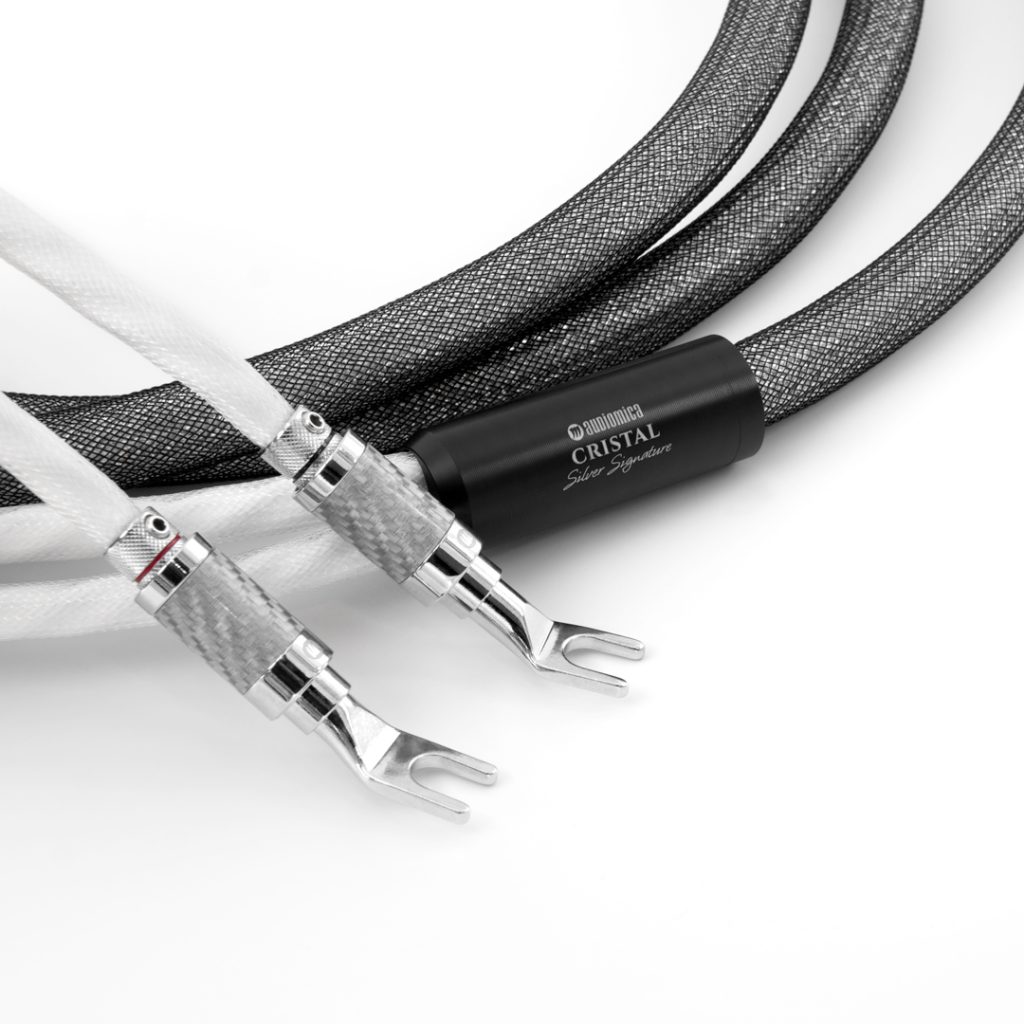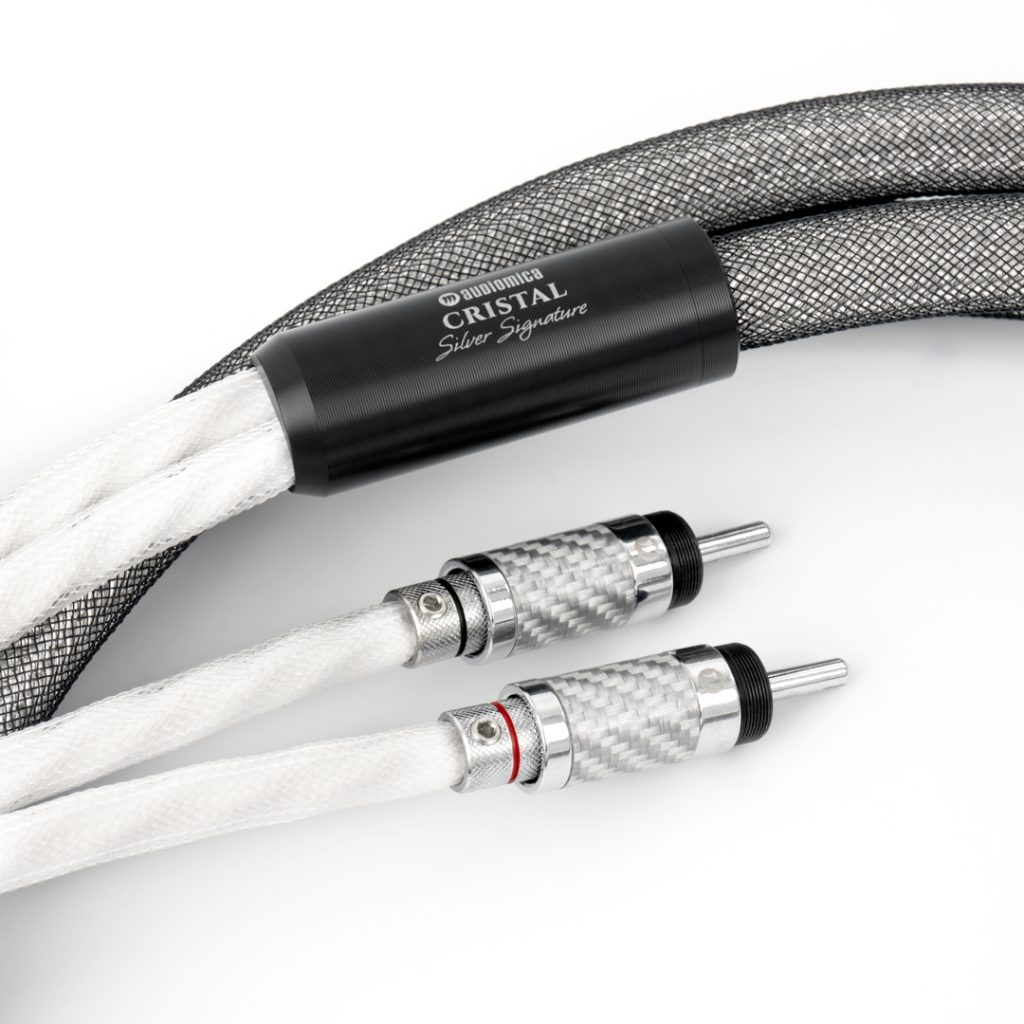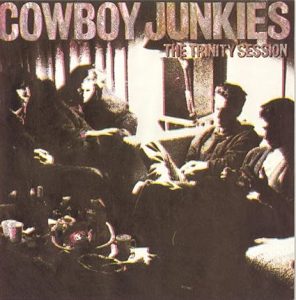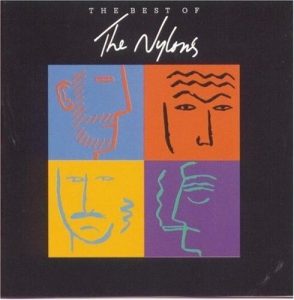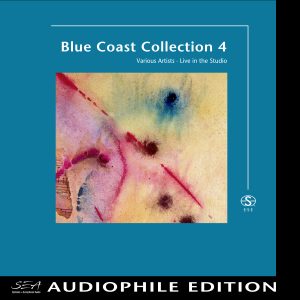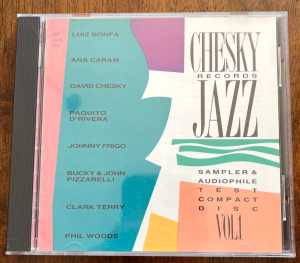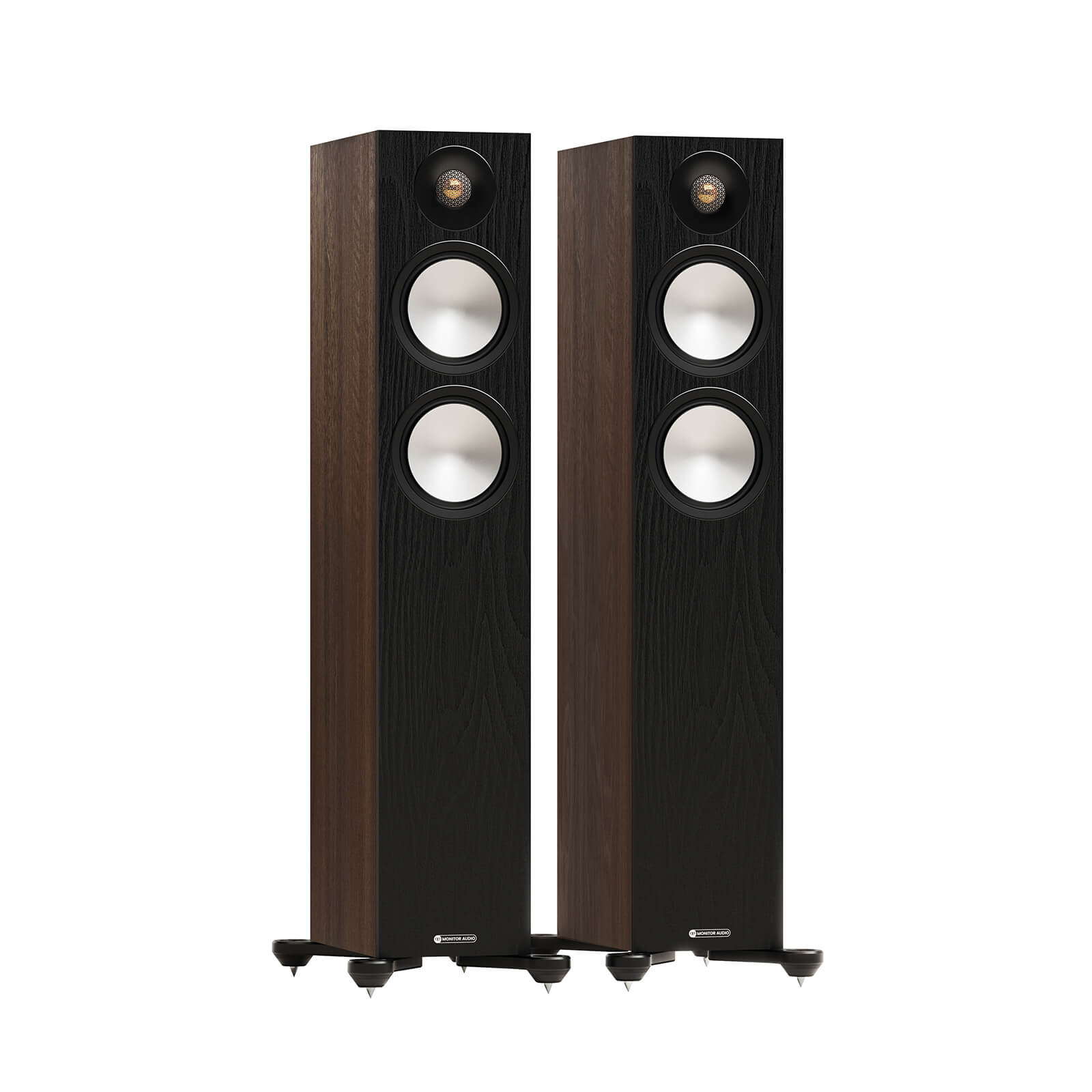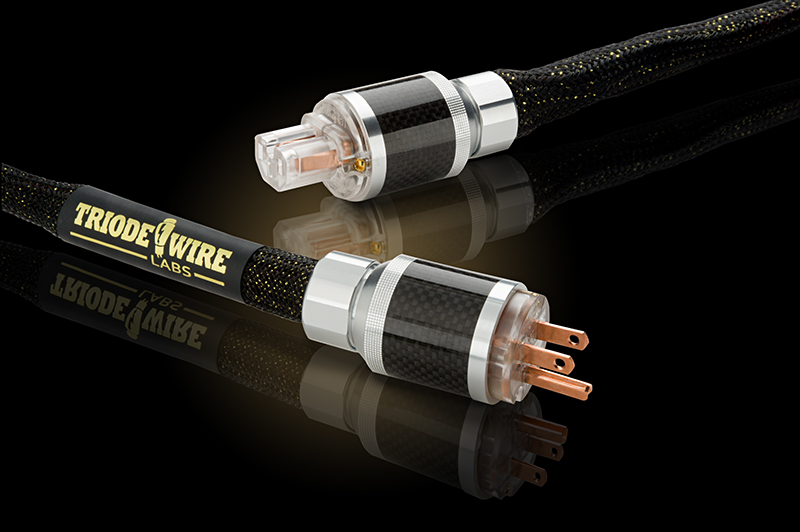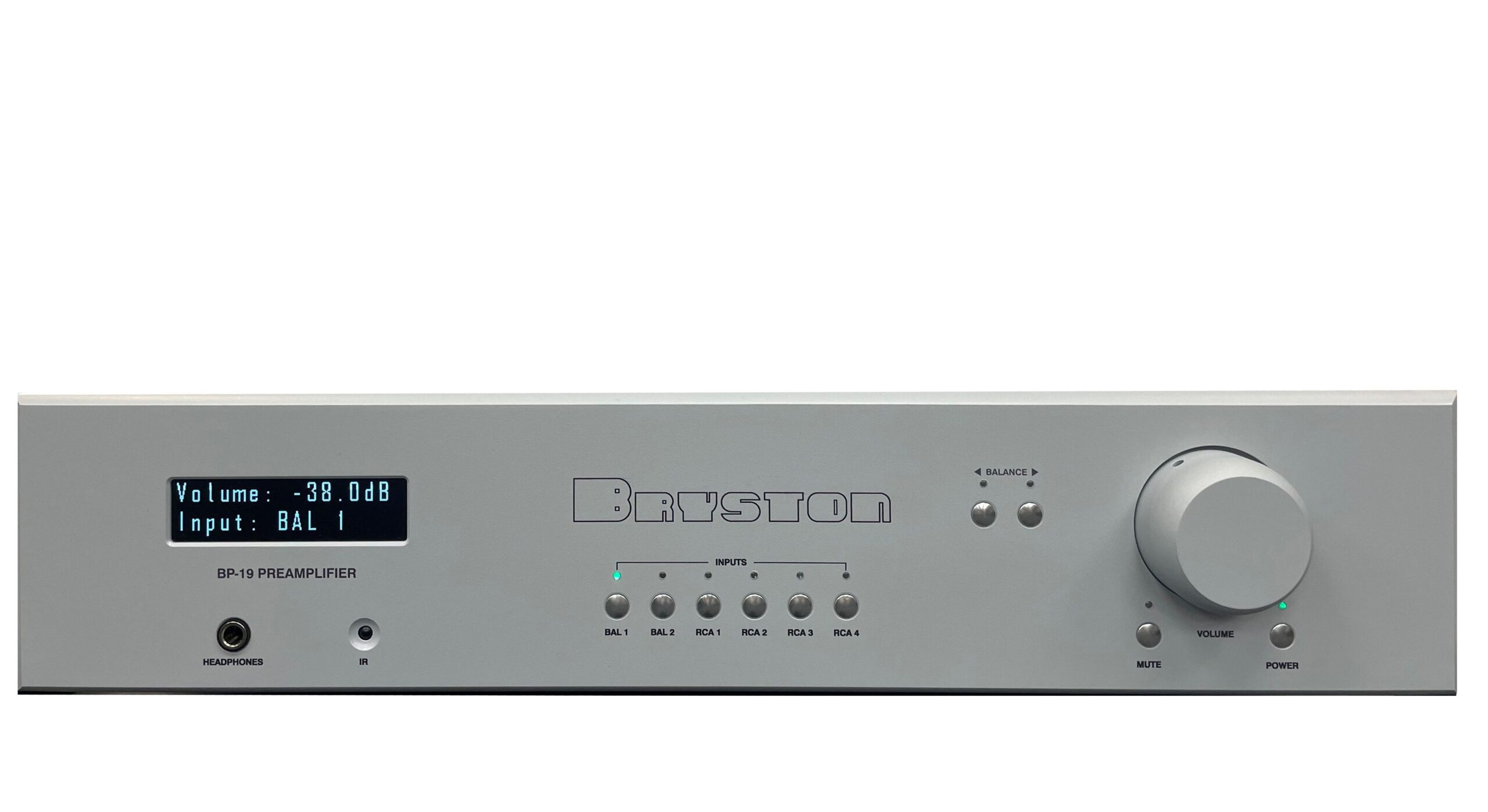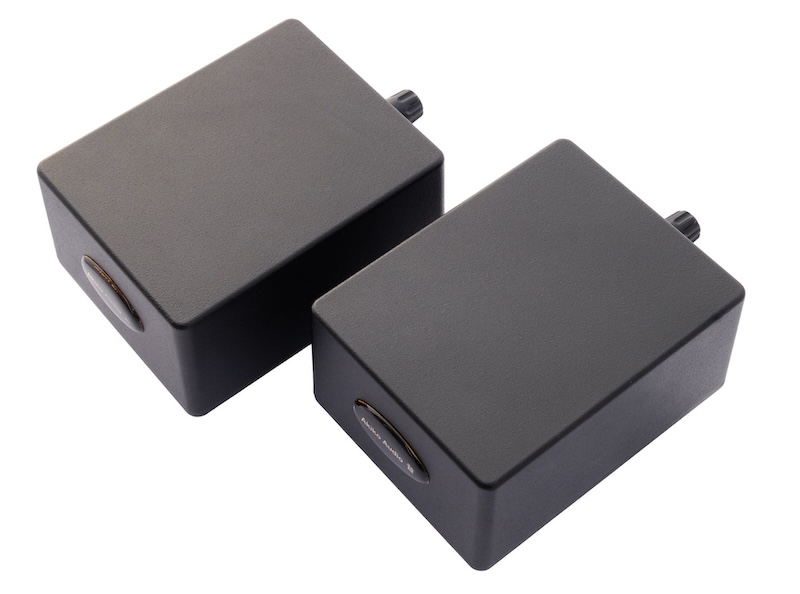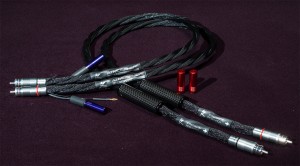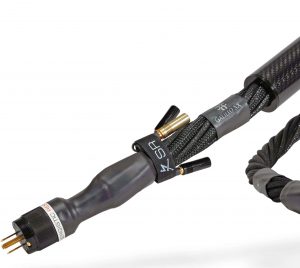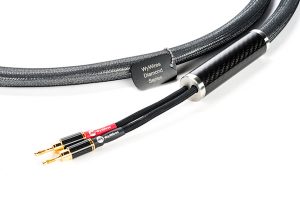In the 36 years that I have been reviewing high end audio components, I have steadfastly held the notion that when it comes to cables, most mechanical filtering usually results in deteriorated sound quality. My rationale; it is very difficult to eliminate or reduce undesired artifacts in the sound signal passing through a cable without also filtering out some of the desired sound signal. Ergo, in the best-case scenario, an ideal cable would be one that gets out of way of the sound signal and delivers it from one end to the other, without changing any of its characteristics.
Based on my experience, I presumed that only a handful of well-established brands with decades of experience and well-funded, immensely talented R & D department staff, have been successful in enhancing performance by using filters in their cables. My presumption took a screeching U-turn when I found that Audiomica Laboratory, a relatively new comer in the field of audiophile cable manufacturing, has been able to join this select group of brands that have managed to enhance cable performance through filtering. The bonus; Audiomica silver signature cables, while not exactly chump change, cost around the same as many of the top-of-the-line models of other reputed brands of cables that deliver a similar level of performance.
What adds intrigue to the tale of these cables is the fact that their genesis can be traced to the small town of Gorlice, located in Poland near the border with Slovakia where a young lad named Łukasz Mika started tinkering with audio cables and roped some of his young friends into his quest for exploring what kinds of conductors, dielectrics and terminations influenced the performance of cables.
A few years into the start of the new millennium, Łukasz and his team commenced their earnest effort to use all the knowledge they had gleaned, into designing their own products and the rest, as they say, is history. They began by marketing their cables in the Poland domestic market and then, encouraged by how positively customers responded to their cables, they slowly expanded to other markets in Europe and finally to other continents, albeit, they have only recently made their debut in the granddaddy of all markets—North America, thanks to Steven Klein, the owner of Sounds of Silence, who is the importer of Audiomica products for the North American Market. Interestingly, Steven offers Audiomica products denominated in Euros, so that his customers can take advantage of the exchange rate when it favors them.
Sadly, Łukasz Mika passed away a couple of years ago, but the group of young Turks that he molded into a go-getter spirited team, continued the work that he started. Since Łukasz's passing, the Audiomica team has made some notable strides in audio cable technology, which has now culminated in their introduction of the new flagship in their lineup—the Silver Signature Collection.
Audiomica went to great lengths to ensure that very high quality materials went into their Cristal Silver Signature collection. The conductors comprise of 7N purity mono-crystal Ohno Continuous Cast copper. This process that was developed by Professor Ohno from the Chiba Institute of Technology in Japan and patented in 1986, draws out copper wire extremely slowly which extends the length of the copper grain and reduces their numbers to 210 per meter and restricts impurities to just around twenty parts per million. This ensures that the electrons encounter fewer impurities and minimize the transitions from one grain to another to deliver a smoother and purer sound.
The Silver Signature speaker cable copper wire is coated with pure silver. It uses six conductors in separate cable lines, each of different thicknesses in the quest to achieve superior separation of high and low frequencies. To handle the skin effect of the conductor, it uses two different thickness conductors in individual veins. PVC tubes separate the three pairs of veins with an additional central insulator added for good measure. All this helps reduce the interference between the lines.
Each conductor has a coating of Fluorinated Ethylene Propylene (FEP), which is a more flexible version of PTFE. For better insulation, the outer structure is enclosed in PVC. A triple shield of proprietary CTB™ (Contrary Twisted Braids) provide 360° coverage. Silver plating is done over the copper shielding braids, and antistatic Acoustic Points POM-C AP50 sleeves provide added protection against any static electricity.
This attention to detail extends to the spade and banana connectors where tellurium copper, enclosed in a double layer of rhodium obtained in the proprietary DCP coating process, enhances the signal transmission. This makes the coating of the bananas and spades ten times thicker and more resistant to damage than the conventional galvanization process.
With the Veroni Silver Signature balanced interconnects, Audiomica employs a micro-conductor structure made of pure silver that has monocrystal technology. The conductors are positioned in four 0.6mm diameter veins. Particular attention has been paid to isolate the negative and positive conductors from each other to minimize interference. Each conductor is coated with FEP and then enclosed in a shielding of aluminum foil and PVC. The interconnect is triple shielded with contrary twisted braids, which are silver plated.
Audiomica has also paid a lot of attention to the solder and the soldering process. In tandem with a leading manufacturer of resins, acrylics and latex, they developed what they call a "mica security liquid," which is a fluid that is applied on soldered joints and which acts as a space filler. The superior liquid consistency of this liquid allows it to fill the micro gaps, thus protecting the whole soldered surface. After it hardens, it offers better mechanical and chemical resistance while also removing any heat emitted by current. This electrically neutral substance protects the solder from the vagaries of transportation, weather conditions, and accidental bumps and falls.
One of the biggest hurdles of any audio cable designer is to minimize the adverse influence that a dielectric has on the cable performance. Most dielectrics tend to absorb a bit of energy from the conductor, and then later, release it back to the conductor. This results in smearing and other forms of distortion. The best dielectric insulator is a vacuum, with air coming in as a close second. Since it is very expensive to design a cable that uses mostly air as a dielectric, many cable designs use Teflon, which is tough, lightweight, and can withstand high temperatures, humidity, and oxidation. Cheaper cables tend to use PVC as a dielectric. This reduces production cost, but usually results in a much lower cable performance level.
Audiomica decided to use the FEP version of Teflon dielectric because of the fact that it has thousands of air bubbles embedded in it during the extrusion process. This results in the conductor being surrounded by a lot of air, which reduces the adverse impact of the dielectric on the conductor. FEP was developed by Dupont in 1960. Audiomica uses PVC only on the exterior layer of their cables to provide flexibility and give the cable some protection against external vibrations.
So, is this all just technobabble, or does it actually result in superior cable performance? That is what this review intends to find out. After 36 years of reviewing high-end audio equipment, through a lot of trial and error and by using many different permutations and combinations, I finally managed to put together a system that is so uncannily neutral, when I change out any single component in the system for the review component, it becomes readily apparent, if and by how much the review component deviates from the desired neutral processing and delivery of the reproduced sound signal. It also helps that I had my dedicated underground listening room acoustically corrected by a professional acoustician.
For the review, Steven sent me two sets of 2-meter Cristal Silver Signature speaker cables, two sets of 2-meter Veroni Silver Signature balanced interconnects. The aesthetics and build quality of the cables and interconnects is outstanding. They reflect the fact that the cables are individually hand built by skilled craftsmen who take a great deal of pride in their work. Each and every cable set is accompanied by a certificate that is individually signed by the craftsmen, and the quality control person authenticating the performance. The shiny silver cable jackets have a very ostentatious bling factor, and that is complemented with the packaging, which comprise of elegant wooden boxes that resemble containers that are usually used to house jewelry.
My sources comprise an Ayre CD player, a Triangle Art turntable, and a Roon Nucleus Plus music server, which, as usual, helps me quickly and easily maneuver through and access the specific tracks required for the audition and review, from my library of over a quarter of a million music files, many of them in high resolution audio files. These files are stored on a 14 TB external hard drive and on the 4 TB SSD installed inside the Roon Nucleus Plus. The superior up-sampling offered by the Nucleus Plus ensures that my digital files are fed into my DAC in a manner that helps it convert the digital signal into analog in the smoothest possible way.
During the first few days of the break-in process both the cables and interconnects sounded a bit vague and confused, but after fully breaking in after around 2 weeks, the sound transformed completely. At first, I auditioned the speaker cables and the balanced interconnects separately. However, since the sound quality they delivered was almost identical, this review is based on the audition with both the speaker cables and the interconnects installed together. One set of the interconnects were used between my Ayre CD player and my Bryston preamp. The second set, was used between my Bryston preamp and my Pass Labs power amps. The speaker cables connected my Pass Labs monoblocks to my ACA SE speakers.
The first thing that struck me as I began the audition, is the rock-solid sonic image with good width and depth within which it is easy to locate the instruments and voices with pinpoint accuracy. When playing "Mining for Gold" from the Cowboy Junkies' Trinity Sessions album, even before Margot Timmins begins crooning in her inimitable voice, the micro details in the reproduced sound, gave me a good sense of the distinctive ambience of the unique recording venue (Church of the Holy Trinity in Toronto, Canada) and the recording equipment (Calrec Ambisonic microphone that fed a digital R-DAT recorder).
When listening to "That Kind of Man" on the The Best of the Nylons album, the sharply defined delineation to each voice with minimal blurring between them is quite remarkable. It allows me to follow and appreciate any of the individual voices without being masked by the other voices.
Next up, "Tombeau de Mr. Blancrocher" by Japanese Harpsichordist Naoki Kitaya on the Stockfish Audiophile Recordings Volume 1. With the Audiomica Crystal Signature cables and interconnects on duty, it helps appreciate how well this track is recorded. The leading edges, as well as the attack and decay of each note on the harpsichord, is spot on. In this regard, the listening experience comes surprisingly close to what is heard at a live performance.
I then played "Close to the Soul" from the Blue Coast Collection 4 album. The vocal harmonies between Keith Greeninger and Chris Kee sounded marvelous with a great deal of presence and emotion. This track truly showcases the tremendous mixing skills of Cookie Marenco, the immensely talented owner of Blue Coast Records.
When listening to "Nardis" from Patricia Barber's Café Blue album, the strokes on the kettle drum are taut, tactile, and very well defined, with hardly any smearing, even with rapidly stuck drum strokes. The kick drum reproduction had commendable grip and resonance with minimal muddiness.
If you have any reservations about silver conductor cables being harsh and bright, the Silver Signatures will put them to rest. These cables are lightning fast, and also deliver accurate timber and harmonics. This is a double-edged sword. On the plus side, this means that they will deliver all the tiny subtleties and nuances without sounding clinical or sterile. On the other hand, their accurate delivery also means that they are less forgiving of bad recordings or less than stellar upstream components. In these cases, all the flaws will also be exposed, warts and all.
My go-to tracks for gauging the ability of components to mine the very depths of subtle micro details in music are "Viola Fora de la Moda," by Ana Caram on the Chesky Records Jazz Sampler Volume 1 album, and "Ride across the River" by Dire Straits on their Brothers in Arms album. On both these tracks, the Silver Signatures did not disappoint. Even at relatively low volume levels, all the microscopic details were present and totally accounted for.
The Silver Signature cables are in the same price category as my reference in the $7000 to $15,000 category; the venerable Cardas Clear Beyond cables. They both deliver top notch performance, but counterintuitively, have different personalities.
The Clear Beyond classily and graciously invites you into the music. In contrast the Silver Signature is no shrinking violet. Rather it delivers big, bold, and dynamically explosive sound. They jump up, grab you and pull you into the music. Aesthetically, the Clear Beyond cables have an air of understated elegance while the Silver Signature cables have an unmistakable bling factor, calling a lot of visual attention to their physical presence.
In terms of noise floor, the Silver Signature betters the Clear Beyond and comes surprisingly close to even the Skogrand Beethoven, which is my cost-no-object reference cable. In this regard, I use Akiko Tuning Sticks to reduce the adverse RFI and EMI effect on audio cables. In most cases, they make an easily discernible positive difference. It is a tribute to the superior shielding on the Silver Signature, that the Akiko Tuning sticks caused less of an improvement than it did on most other cables.
However, the Clear Beyond cables pips the Silver Signature at the post when it comes to expressing broader midrange timbre, dynamic contrast, saturation and texture. I have always marveled as to how human voices, emerge with great presence, transparency, and emotion through Clear Beyond cables.
If you have speakers that deliver sound that are a hint on the bright side of neutral, the Clear Beyond cables would be a good match. However, if your speakers are sonically a smidgen on the darker side of neutral, the Silver Signature cables would be a better match.
At around $10,000 to $18,000 a pair, depending on cable length, the Silver Signature collection is far from chump change in terms of affordability. At this price range, they compete with some of the well-established, highly reputed brands in the cable arena. However, their performance and build quality makes this new kid on the block a serious contender in this highly exalted company.
If you happen to be in the enviable financial position where your cable budget does extend into five-figures, you would be well advised to give the Audiomica Silver Signature collection, a serious audition, before you pull the trigger.
Cristal Silver Signature Speaker Cables
Retail: 2.5 meters speaker cable 12,796 Euros a pair. Each additional 0.5m +/- 1,390 Euro
Veroni Silver Signature Analog Interconnects
Retail: 1-meter balanced or RCA interconnect 11,370 Euros a pair. Each additional 0.5m +/- 2,780 Euro. 1 Euro is approximately 1.10 US Dollars
Importer for Audiomica Laboratories for North America
Steven Klein, Sounds Of Silence
14 Salmon Brook Dr
Nashua, NH 03062
Audiomica Laboratory - Poland
Słoneczna 2, 38-300 Gorlice, Poland
+48 535 524 835




